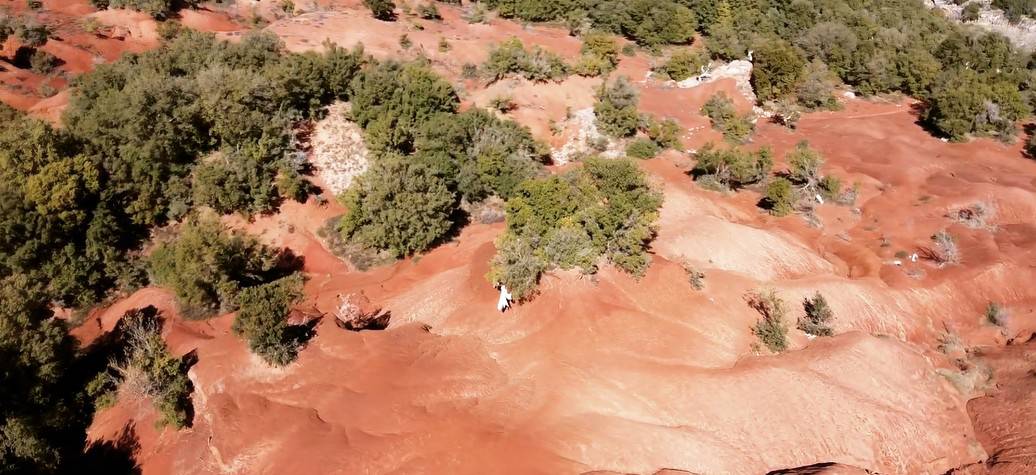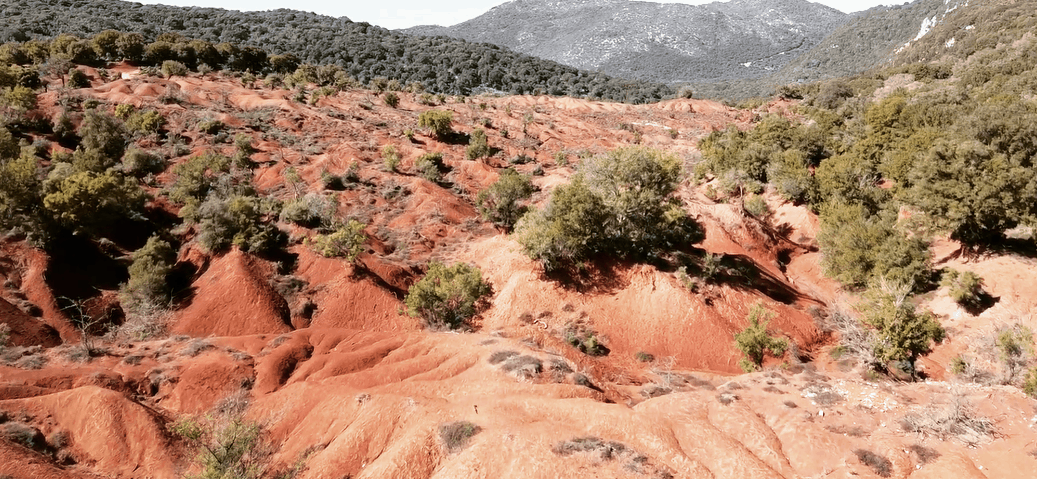It has been said that in Greece you can find places that remind you of landscapes from all over the world.And that is true. Mountains and sea, forests and long plains, all create the unique landscape of Greece and its rich flora and fauna.
Geologists, however, believe that in Greece you can find landscapes that not only look like other parts of the Earth, but also like other planets.
This is especially accurate when it comes to Kokkinopilos: an imposing mountain range with numerous hillocks covered by red soil creating an eerie red landscape, reminiscent of the planet Mars.

Kokkinopilos is located in northern Greece, near Fillipiada, in Preveza, covering about 600 acres of area and enclosed by a dense forest.
Over the years, Kokkinopilos has gathered international attention and it has been characterized as a “prehistoric geological phenomenon of great geological and archaeological importance”.

Scientists from around the world have researched and examined the area of the mountain range for years to determine the origin of the red colour of the soil and the texture of the mountainous, sandy floor.
Numerous geological research studies have been carried out in the area of Kokkinopilos since the 1960s by independent scientists and researchers, and there are a few different theories about what exactly caused this phenomenon.
Research has shown that the Kokkinopilos hill complex constitutes large amounts of iron oxides with clay, and is in fact a unique and impressive prehistoric karstic depression filled with red clays in an environment of transient lakes (wet and dry periods), with internal drainage.
In addition, due to the neotectonic activity on the hillocks, the sediments today have a slight slope to the northwest, and their thickness – based on previous research drillings – exceeds 20 meters, which is considered a high number for hills of that size.

Scientists also believe that the current appearance of the Kokkinopilos hills is a rather extraordinary, but nevertheless natural phenomenon, caused by heavy rains in the area.
The rains turned this low red plateau – also called Terra Rossa (Red Earth) – into an alternating landscape with hills and small ravines. The rainwater dragged the soft red sand to the plain (called Stefani), which was located within the surrounding forest, and slowly over the years, more and more crimson hills started to naturally appear.
According to recent reports by scientists, the red soil, which exists in Greece and other southern European countries, such as Spain and Italy, has reached these places by crossing the Mediterranean Sea in the form of African dust.
This belief has also been supported by a new chemical and mineralogical research by Spanish and American researchers in the area of Kokkinopilos, who emphasize that the climatic conditions that prevail in the area (rainfall, high temperature, winds and so on) are a determining factor in the formation of the Kokkinopilos terrain.

“Clay gives this earthy texture on the hills and the iron oxides are the reason for that the red, crimson colour. This rare landscape looks like a Lunar or rather a Martian setting created by the erosion phenomena that took place centuries ago, and are still taking place in the area to this day,” says Dr. Evangelos Nikolaou, Geologist Engineer, Hydrogeologist and Director of IGME (Institute of Geology & Mineral Exploration).
In addition to its geological importance, the site also holds special archaeological interest for visitors.
The discovery of Palaeolithic stone tools and weapons, as well as the recovery of the passage of a grand Roman aqueduct in the area, add even more historic and touristic value to the area.
Century-old wells and ancient findings from excavations are also preserved, in good condition, for visitors to explore.
The first big archaeological discovery of the area was made in 1962 by Eric S. Higgs, who, in addition to the magnificent natural landscape, discovered many items and artefacts from the Palaeolithic and Bronze Ages of Greece.
Double-sided stone axes, hammers, spears and other type of hunting weapons, dating back to 250,000 years are on display today at the Archaeological Museum of Ioannina, testifying to the extensive presence of primitive people in the area.

Kokkinopilos is open to the public, who are able to reach it on foot or via car. However, a visit to the area requires special preparations for extreme weather phenomena (heavy rains and low temperature during winter time), to be made by adventure enthusiasts who are looking for a short, but challenging hike.
“This is a very unique place in Greece, and a must visit destination, if you want to see what Mars could be like.
” However, the protection of this habitat from any anthropogenic activity that causes pollution or damage of the natural landscape is considered a duty for all of us,” Dr. Nikolaou concluded by highlighting the importance of preserving the enchanting setting of Kokkinopilos.

Photo credit: Instagram: @n.p._production
Read also on Greek City Times:
Alonissos honoured on National Geographis’c ‘Best of the World’ list 2020

